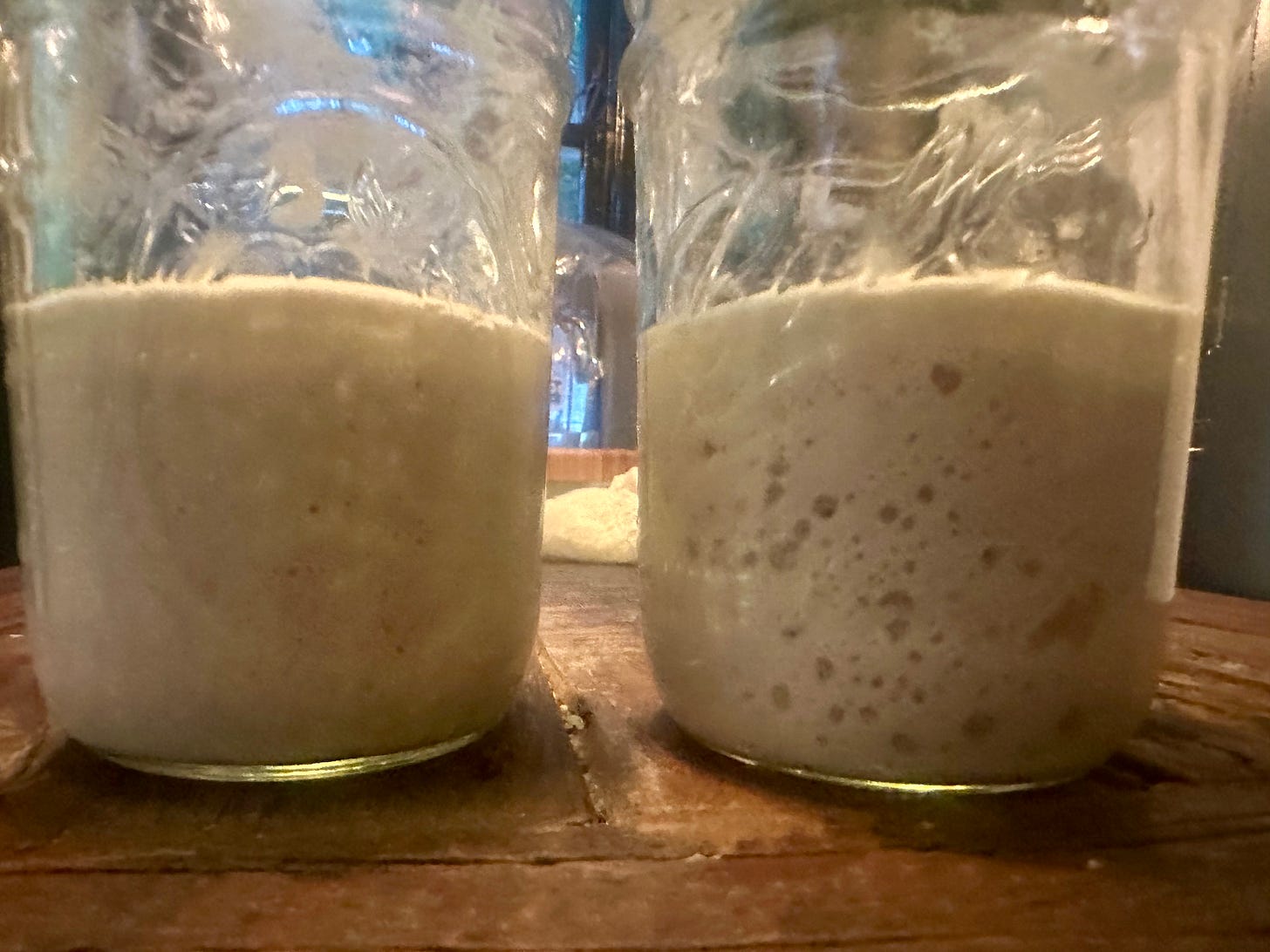Is There Something In The Water?
Of Wilhelm Reich, Viktor Schauberger, and Sourdough Starter
Update 10/22/24: this experiment failed to replicated three times, and the post never made it past a draft state.
tl;dr — If Schauberger’s ideas are correct, and spring water carries a greater quantity of subtle energy than tap water, then spring-fed sourdough starter should demonstrate greater activity than tap-fed. If Reich’s ideas are correct, and orgone accumulators can be used to attract the same kind of energy as is drawn into streams by their turbulent flow, then we should be able to use such an accumulator to charge tap water, and see a similar increase in starter activity as when fed spring water.
Wilhelm Reich (1897-1957), once Freud’s star pupil, became a pariah at least three times in his life.
As the Nazis came to power, Freud feared his own work wouldn’t survive association with a communist Jew, and so he expelled his favorite from the International Psychoanalytic Society. Reich fled to Oslo where he continued his search for the biological basis of Freud’s libido, and, almost incidentally, observed amoeba forming spontaneously out of dead organic matter. Such a tremendously unorthodox claim made him an easy target for fellow researchers competing for grant money, and an eight-month smear campaign left Reich without a Norwegian visa.
Fleeing this time to America, home of the ostensibly free, Reich tugged at the threads of a subtle energy he termed orgone, the force that he believed animated the self-organizing amoeba observed in his Oslo laboratory. Unfortunately, his reputation followed him across the Atlantic, and his ideas drew exceptional scrutiny from the FDA, which pressed charges against him for the accidental transport of one of his devices, an orgone accumulator, across state lines. Obtaining a conviction in 1955, they also burned and banned his books, and destroyed his equipment and notes. Reich died in jail two years later at the unripe age of 60. If and when he is remembered, it is most often for his outstanding contributions to the somatic dimension of psychotherapy; his ideas about orgone have largely (not entirely [1]) gone ignored, but perhaps not for much longer.
Viktor Schauberger (1885-1958) began as an Austrian naturalist who made a name for himself as the inventor of a superlative timber flume, a canal for carrying timber from forest to mill. He spoke about his lifelong obsession with water with mystical poeticism, suggesting that his consciousness would leave his body to go into the water, and return with new ideas about its nature. Through his meditative observations, Schauberger came to believe that water had a variable energetic quality (perhaps related to or even synonymous with Reich’s orgone) that was enhanced by the natural vortices produced by river and stream beds; he spent the rest of his life exploring and applying the phenomenon at the center of a vortex, implosion, a concept that appears to have recently made a comeback via Malcom Bendell in his thunderstorm generator, an inexpensive device that transmutes CO and CO2 into oxygen [2]. (Yes, you read that right, and we’ll see, but it looks good to me.)
But, enough history! Let’s do an experiment testing both Schauberger’s theories regarding the variable vitality of water, and Reich’s regarding the existence and accumulation of orgone.
Starting with Schauberger, we’ll feed sourdough starter with spring water (collected from a stream in the Oregon coast range) and tap. If spring water indeed has more vitality than tap, we should expect to see more activity in the spring-fed starter.
Neat! Maybe. Of course, it could easily be the case that the tap water has hampering solutes, or that the spring water has helpful ones, or both—and nothing to do with a mysterious subtle energy largely ignored by modern physics for more than a century. And we could go to terrible lengths to control for these factors. Or, we could shoot the moon, pinning our hopes on dreams on the determinant being a higher concentration of our eccentric orgone, and simultaneously test Reich’s accumulator notion. In other words, if starter fed with orgone-charged tap water exhibits a similar increase in activity, we’d have good reason to believe 1) that Reich’s accumulators are in fact accumulating a mysterious subtle energy and 2) that Schauberger’s theories about water—er—hold water.
And how!


